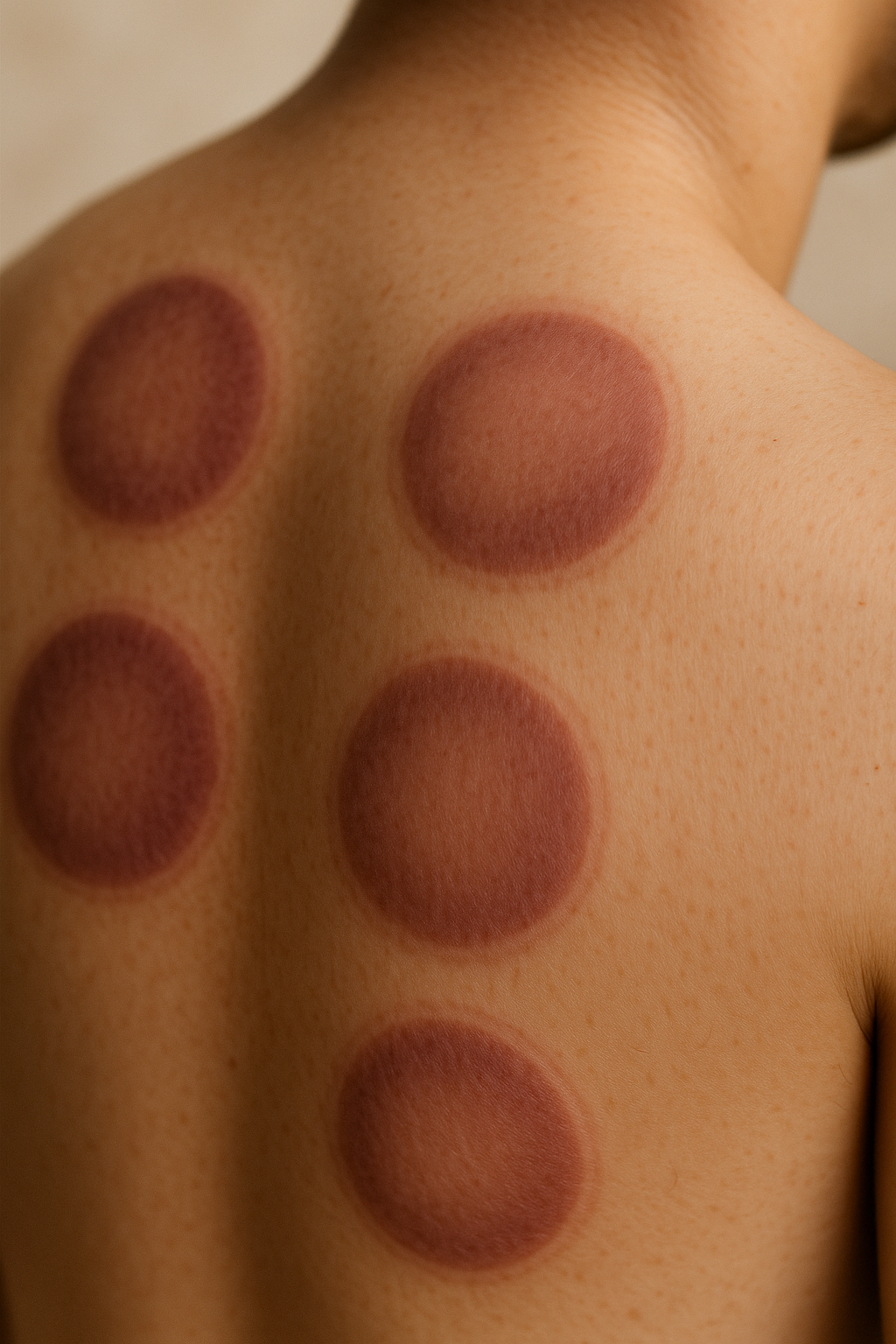
01 Aug What is Hijama Therapy or Cupping Therapy
Hijama Therapy: A Comprehensive Guide to This Ancient Healing Practice
In a world increasingly seeking holistic approaches to well-being, ancient therapies are experiencing a powerful resurgence. Among them, Hijama cupping therapy, a practice rooted in deep historical tradition, is gaining significant attention.
But what exactly is Hijama, and how can this age-old technique contribute to modern health?
This guide will delve into the origins, mechanisms, hijama benefits, and practical aspects of Hijama therapy, offering a comprehensive understanding of this fascinating healing modality.
Introduction to Hijama Therapy
Hijama therapy, also known as wet cupping, is an ancient therapeutic technique that involves applying suction cups to specific points on the body to draw out stagnant blood and toxins.

Its roots stretch back thousands of years, interwoven with various ancient civilizations and medical systems.
This practice finds mention in Traditional Chinese Medicine (TCM), but its earliest recorded use dates back to ancient Egyptian practices, as documented in the Ebers Papyrus, dating to approximately 1550 B.C.
What is Hijama in Islam?
Hijama holds particular significance in Islamic medicine, where it’s revered as a Sunnah practice – a tradition and teaching of the Prophet Muhammad (peace be upon him), who reportedly advocated and practiced it.
It’s important to distinguish Hijama from other forms of cupping.
While dry cupping, sliding/massage cupping, and fire cupping all involve suction for various therapeutic effects, Hijama wet cupping therapy uniquely incorporates small, superficial incisions to facilitate the release of blood.
The overarching goal of Hijama is to stimulate natural healing, improve circulation, remove stagnation, and restore vital balance within the body.
How Hijama Therapy Works (Mechanism of Action)
The effectiveness of Hijama therapy lies in its unique mechanism of action, which combines mechanical stimulation with the targeted removal of metabolic waste.

First, the application of cups creates a vacuum, gently lifting the skin and underlying tissues. This suction effect immediately increases blood flow to the targeted area.
This localized hyperemia brings fresh, oxygenated blood and nutrients to the tissues while simultaneously drawing out deoxygenated blood and cellular waste products.
For wet cupping (Hijama), after the initial suction, the practitioner makes tiny, controlled incisions on the skin, typically no more than a few millimeters deep. When the cups are reapplied, the vacuum then draws out a small amount of “stagnant blood.”
This blood is believed to contain accumulated toxins, inflammatory mediators, and cellular debris that the body may not be efficiently eliminating.
This process is thought to trigger the body’s natural healing response, reduce inflammation, and improve lymphatic drainage, which is crucial for waste removal.
Physiologically, Hijama is believed to influence metabolic activity, immune function, and blood biochemistry.
By creating a controlled micro-trauma and drawing out stagnant fluids, it prompts the body to initiate repair processes, release natural painkillers, and potentially modulate immune responses, contributing to overall systemic well-being.
Benefits of Hijama Therapy (Why cupping therapy is done)
People seek Hijama therapy for a wide array of health concerns, often drawn by its holistic approach and the promise of addressing root causes rather than just symptoms.
Here are some of the commonly reported benefits:
Pain Relief: Many find significant relief from chronic pain conditions like back pain, neck pain, shoulder pain, joint pain, arthritis, sciatica, headaches, migraines, and muscle soreness. Athletes often report it beneficial for faster recovery.
Improved Circulation: Hijama enhances oxygen and nutrient supply to tissues, leading to faster healing and tissue repair.
Detoxification: It aids in the removal of impurities and stagnant blood, stimulates lymphatic drainage, and supports liver and kidney function, helping your body cleanse itself naturally.
Stress Reduction & Mental Well-being: Beyond physical relief, Hijama promotes deep relaxation, reduces anxiety, helps lower cortisol levels, and may improve sleep and mental clarity.
Immune System Boost: By stimulating white blood cells and reducing inflammation, Hijama enhances your body’s overall resilience to illness.
Skin Health: It can be beneficial for conditions like acne, eczema, and cellulite, and may improve collagen production for healthier-looking skin.
Digestive and Gut Health: Hijama can aid in relieving congestion and promoting free flow in the digestive system, helping to address issues like bloating and constipation.
Respiratory Health: It may offer relief for chronic cough, asthma, and bronchitis.
Spiritual Benefits: For many, particularly within the Muslim community, performing Hijama is also an act of faith and a way to follow the Sunnah, bringing spiritual peace alongside physical well-being.
The Hijama Procedure: What to Expect
Understanding the Hijama procedure can help alleviate any apprehension and ensure a smooth experience.

Before the Session:
Preparation is key. You’ll typically be advised to:
- Hydrate well.
- Empty stomach or Drink a light liquids or juices a few hours before, but avoid eating meals right before.
- Avoid certain substances like blood thinners, caffeine, and alcohol for 24-48 hours prior.
- For men, ensuring the area to be treated is free of hair is often recommended.
A crucial step is a thorough consultation with a qualified hijama therapist. This involves discussing your health history, current medications, and specific concerns to ensure Hijama is suitable for you and to identify the optimal points for treatment.
During the Session:
Placement of Cups: The doctor will identify specific body points for treatment. Common areas include the back, shoulders, and legs, depending on the condition being addressed.

Creation of Suction: Cups are placed on the chosen points, and a vacuum is created using a manual pump. You’ll feel a gentle pulling sensation as the skin rises within the cup.
Micro-Incisions: For wet cupping (Hijama), after the initial suction for a few minutes, the cups are removed, and the practitioner makes small, superficial incisions on the skin using a hijama pen.
These incisions are typically very shallow and designed to allow for the release of stagnant blood without causing significant pain or scarring.
Application of Cups: The cups are then immediately reapplied to the same points, and the suction draws out a small amount of dark, stagnant blood and fluid.
Duration: The cups typically remain in place for 5-15 minutes, allowing for the therapeutic effect.
After the Session (Aftercare):
Common Marks: It’s normal to have circular marks, often appearing as bruises or dark red spots, where the cups were placed. These are temporary and usually fade within 24 hours to 3 days.
Post-procedure Precautions: You’ll be advised to:
- Avoid showering for a 24 hours to allow the incision points to seal properly.
- Avoid strenuous exercise immediately after.
- Limit red meat consumption for 24-48 hours.
- Avoid milk and milk based products
- Prioritize hydration and rest to support your body’s healing process.
- Application of healing oils like black seed oil or olive oil may be recommended to soothe the skin and promote healing.
Potential Sensations: You might experience mild pressure, pulling, or a sense of relaxation during the session. Afterward, some individuals report temporary tiredness or lightheadedness, which usually subsides quickly with rest and hydration.
Safety, Risks, and Contraindications
When performed correctly, Hijama cupping therapy is generally considered safe. However, like any therapeutic procedure, it’s crucial to be aware of safety considerations, potential risks, and contraindications.

Safety:
The paramount factor in Hijama’s safety is ensuring it is performed by a trained, qualified, and certified professional who adheres to strict hygiene and sterilization protocols.
This includes using single-use, sterile equipment (cups, blades, gloves) and maintaining a clean environment to prevent infection. At Alhadeh Hijama Clinic, we prioritize these standards to ensure your safety and well-being.
Minor Side Effects:
Circular Marks/Bruising: As mentioned, these are common and temporary, fading within a few days.
Slight Discomfort or Soreness: The treated area might feel tender or sore for a short period.
Lightheadedness or Fatigue: Some individuals may feel temporarily lightheaded or tired, especially if they are new to the therapy or prone to low blood pressure.
Potential Risks (if performed improperly):
Infection: This is the most significant risk if non-sterile equipment or improper aftercare practices are used. Emphasizing sterile equipment is critical.
Excessive Bleeding: While controlled bleeding is part of Hijama, excessive bleeding can occur, especially in individuals on blood thinners or with bleeding disorders.
Contraindications (Who Should Avoid Hijama):
Certain conditions or circumstances make Hijama unsuitable or require extreme caution:
- Pregnant women
- Women who are on Menstrual Cycle
- Who have fever
Frequently Asked Questions (FAQs) About Hijama Cupping Therapy
Here are some common questions people ask about Hijama therapy:

Is Hijama painful?
Most people describe the process as a pulling sensation or mild pressure rather than pain.
The micro-incisions are very superficial, and many doctors and therapists use techniques to minimize discomfort. Some may feel a slight sting, but it's generally well-tolerated.
How long do the hijama marks last?
The circular marks or bruises typically last anywhere from 24 hours to 3 days, depending on your individual healing response and the intensity of the suction. They gradually fade over time.
How often should I get Hijama?
Hijama therapy frequency varies by individual health needs. For general wellness, sessions are recommended monthly or every twice a month or once a month
Due to increased stress, toxins, radiation and unhealthy lifestyle factors, many now undergo monthly treatments to support detoxification, immunity, and overall well-being. Always consult a qualified Hijama Therapist.
Is Hijama scientifically proven?
While Hijama has a long history of anecdotal evidence and traditional use, scientific Studies are exploring its effects on pain, inflammation, and immune response.
While more robust clinical and preliminary findings are often promising, supporting its traditional have significantly seen improvements in diseases and reduced pain especially when performed wet cupping.
Can Hijama be done at home?
It is strongly advised against performing Hijama at home. The procedure requires specialized knowledge of anatomical points, sterile techniques, and proper disposal of biohazardous waste.
Improper technique can lead to infections, scarring, excessive bleeding, or other serious complications. Always seek a certified and experienced Hijama Specialist.
What is the cost of Hijama therapy in Hyderabad?
The cost of Hijama therapy in Hyderabad can vary depending on the Therapist's experience, the clinic's facilities, and the number of cups or sessions required. It's best to inquire directly with certified clinics for their specific pricing.
Who can perform Hijama?
Hijama should only be performed by certified and licensed Hijama Specialists who have undergone extensive training in proper technique, hygiene protocols, and the fundamentals of human anatomy, biological systems, and physiological processes.
Always look for Hijama Therapists with recognized certifications and genuine client testimonials.
Beware of the “one-day wonders”—a crash course doesn't make a Hijama expert. Choose qualified experience over convenience.

Conclusion
Hijama Cupping therapy, with its profound historical roots and continued relevance, offers a compelling approach to holistic wellness.
By promoting detoxification, improving circulation, and stimulating the body’s innate healing mechanisms, it serves as a powerful complementary therapy for a range of physical and mental concerns.
While its practice extends back centuries, our modern understanding of its physiological effects continues to grow.
If you are considering Hijama therapy, we strongly encourage you to consult with a qualified and certified practitioner.
Ready to try Hijama therapy in Hyderabad? Contact our certified Hijama Specialist today for a personalized consultation and begin your healing journey.
Sources -
Hijama History Ebers Papyrus: Leipzig University Library.
Cupping Therapy Overview: StatPearls - NCBI Bookshelf.
Cupping for Pain: NCBI PubMed Central. "Efficacy of cupping therapy Treatment on pain outcomes: an evidence based study."
Cupping for Inflammation: ResearchGate. "Cupping Therapy Provides Anti-Inflammatory Diseases"
Cupping Therapy Information: Cleveland Clinic.

No Comments